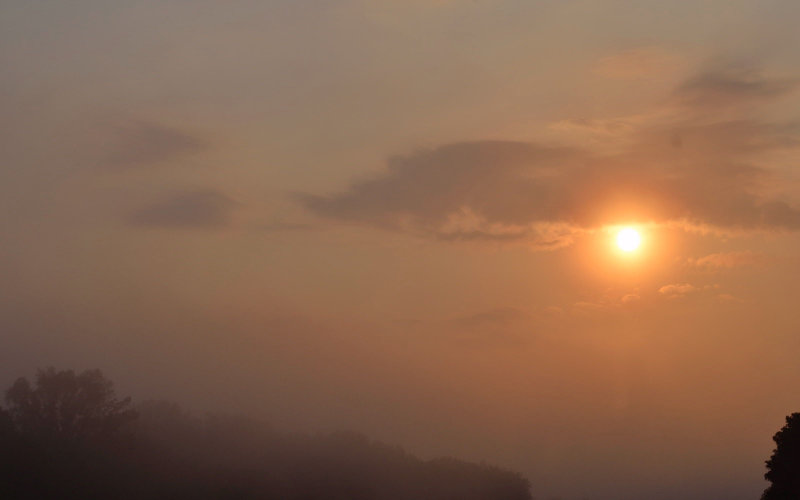Summer Survival | It’s All About Dew Point – Not The Humidity

Dew point is what it’s all about during the summer. When it comes to the forecast, mostly what I want to know is the dew point.
Why? Because that’s directly related to how “muggy” or “sticky” it feels.
The relative humidity tells me nothing. Well, it does, although it doesn’t mean much regarding my summer comfort level. Here’s why:
First, there are three typical numbers in a summer forecast:
- Temperature
- Relative Humidity
- Dew point
Temperature is straight forward. It’s simply the temperature. 70 feels nice. 80 it’s getting hot. 90 it’s hot. 100 it’s extremely hot. Simple, right?
Relative Humidity is the least useful, and can be very misleading. I might best illustrate this by showing you a chart.
| Time | Temp. | RH | DP |
| 8:00 AM | 72 | 87% | 68 |
| 10:00 AM | 74 | 82% | 68 |
| 12:00 PM | 78 | 71% | 68 |
| 2:00 PM | 84 | 58% | 70 |
For those who focus on the relative humidity, they would be wrong to conclude that the weather will be the most comfortable at 2 PM ( ‘only’ 58% humidity).
In fact, the most miserable time of the day would be 2 PM! Why? because the dew point is 70, not to mention that the air temperature itself is the hottest of the day at 84 in this example.
If I stepped outside at 8 AM, though the relative humidity is high at 87%, the air temperature is a comfortable 72, even though the dew point is on the muggy side at 68.
(here’s a DP calculator that I found online)
Dew Point Is How Muggy It Feels
It’s the temperature at which water vapor in the air will begin condensing to form dew on the grass, or mist and fog in the air.
It is an indicator of the total amount of moisture in the air and an important comfort factor (or lack thereof!) during the warmer summer months.
When you sweat / perspire, the moisture on your skin evaporates and cools your body. When the dew point is high, the water on your skin evaporates very slowly because there’s so much water vapor in the air. You don’t get the efficient cooling effect on perspiring wet skin with ‘wet’ air. It feels “muggy” or “sticky”.
Dew points less than 60 degrees feel comfortable or “dry”. When it rises above 65 degrees the air feels “sticky.” As it climbs into the 70s the air becomes very sticky or oppressive.
Dew Point versus Relative Humidity
The dew point is the temperature the air needs to be cooled to (at constant pressure) in order to achieve a relative humidity (RH) of 100%. At this point the air cannot hold more water in the gas form. If the air were to be cooled even more, water vapor would have to come out of the atmosphere in the liquid form, usually as fog or precipitation.
National Weather Service
The higher the dew point rises, the greater the amount of moisture in the air. This directly affects how “comfortable” it will feel outside. Many times, relative humidity can be misleading. For example, a temperature of 30 and a dew point of 30 will give you a relative humidity of 100%, but a temperature of 80 and a dew point of 60 produces a relative humidity of 50%. It would feel much more “humid” on the 80 degree day with 50% relative humidity than on the 30 degree day with a 100% relative humidity. This is because of the higher dew point.
So if you want a real judge of just how “dry” or “humid” it will feel outside, look at the dew point instead of the RH. The higher the dew point, the muggier it will feel.
The Takeaway
To sum it up, I don’t care what the relative humidity number is during the summer. Rather, among other things, I want to know what the dew point is going to be that day, along with the high temperature! That way I’ll know how yucky it’s going to be outside!
How muggy does it get where you live during the summer? What are your typical summer dew point temperatures? When does it feel really nasty to you? Do you actually get used to it? Any secret tips for staying “not so hot” outside during these conditions?
As I write this it’s mid July in northern NH. I’m looking at my weather station which indicates a DP of 65 degrees right now at noon (air temp. a pleasant 77). Feels muggy, though not terribly awful like hitting high 60s and 70+ dew points.
